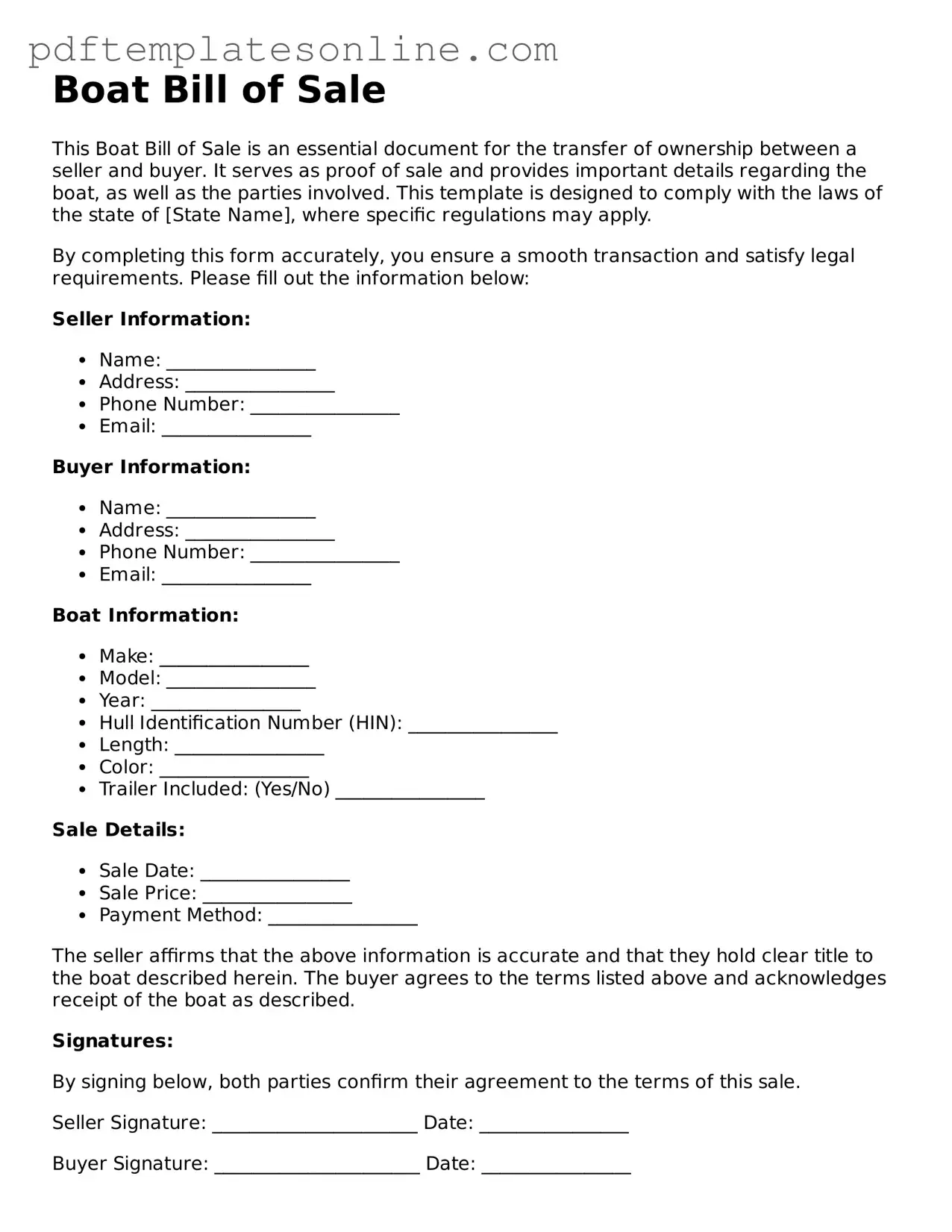Filling out a Boat Bill of Sale form can seem straightforward, but many people make common mistakes that can lead to complications down the road. One frequent error is not including all necessary information about the boat. Details such as the make, model, year, and hull identification number (HIN) are crucial. Omitting any of these can create confusion regarding ownership and registration.
Another common mistake is failing to provide accurate information about the buyer and seller. Both parties should ensure that their names, addresses, and contact information are correct. Inaccuracies can lead to disputes or difficulties in transferring ownership later. It is essential to double-check this information before finalizing the document.
Many individuals also overlook the importance of signatures. Both the buyer and seller must sign the Boat Bill of Sale for it to be legally binding. Some people assume that a verbal agreement is sufficient, but without signatures, the document lacks the necessary legal weight. Ensure that both parties sign and date the form appropriately.
Not including the sale price is another mistake that can have significant consequences. The sale price establishes the value of the boat for tax purposes and can affect registration fees. Clearly stating the agreed-upon price in the form helps avoid any potential misunderstandings or disputes in the future.
In some cases, people forget to include the date of the transaction. This seemingly minor detail can lead to complications if questions arise about when the sale occurred. A clear date helps establish a timeline and can be important for both parties in case of any future legal issues.
Additionally, many individuals fail to provide a clear description of any included accessories or equipment. If the sale includes items like trailers, life jackets, or fishing gear, listing these can prevent disputes about what was included in the sale. Buyers and sellers should take the time to detail all items transferred with the boat.
Another mistake involves not keeping a copy of the completed Bill of Sale. After signing the document, both parties should retain a copy for their records. This serves as proof of the transaction and can be invaluable if any disputes arise later on. Without a copy, one party may find themselves at a disadvantage.
Finally, some people may not check local laws regarding the Bill of Sale. Each state has its own requirements for boat sales, including specific forms or additional documentation. Familiarizing oneself with these regulations can save time and prevent legal headaches. Always verify that the form meets local requirements to ensure a smooth transfer of ownership.
